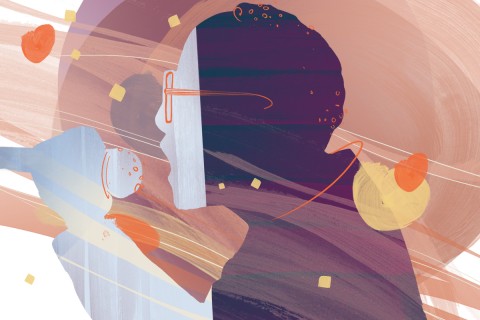The monsters we fear
Religion and horror often ask us to reflect on the same set of questions.

(Illustration by Enrique Quintero)
In 1973, James Bond made his way to New Orleans to Live and Let Die. Dirty Harry brought his brand of tough justice to more criminals with Magnum Force. And an animated fox robbed the rich and gave to the poor in Walt Disney’s Robin Hood. But the most unusual hero in cinema that year carried a crucifix instead of a gun and spent more screen time wrestling with his faith than fighting bad guys. Rather than being a spy or police officer, he held the uneasily combined professions of priest and psychiatrist. The Exorcist was the highest-grossing movie that year, a cultural phenomenon that reinvigorated the horror genre.
Traditionally, the relationship between Christianity and the genre of horror—on the page and on the screen—has been adversarial. There’s too much violence in these stories, too much pessimism, too little hope, and far too little God. When religion does show up—often in the form of an ineffective bureaucracy, an abusive parent, or a bumbling priest—it’s often the subject of mockery.
But what if that’s not the whole story? What if horror, as a genre, can actually help us think through some of the questions that are most important to our lives of faith? What if horror can help open our imagination up to a world that acknowledges our anxieties but also includes the Divine? The Exorcist is about good versus evil and terrifying things that go bump in the night. But it’s also a story of the power of faith—and what it means to try to hold onto that faith in a world where evil lurks.




